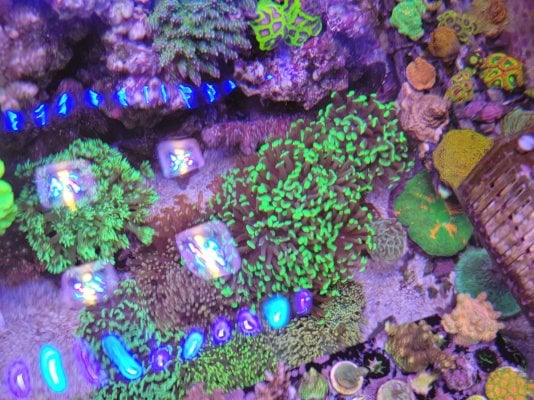Hi Tampa Bay Saltwater!
I'm in the process of getting my Caribsea Liferock ready for my tank. At the moment it's in a covered Rubbermaid trough and I add a little Dr Tim's and ammonium every few days alternately. The trough is not being fed, has no light and no filtration (although the water is being heated and circulated).
I was at Reefapalooza today and heard Ryan Batcheller talk about using maricultured rock and mud to do so.
What would you suggest as a product to aid in cooking/cycling/seasoning the rock... if it's even possible in those circumstances? I'm assuming the bacterial populations wouldn't be affected but I don't want to kill any sponges etc that might tag along. And if feeding in some way was necessary, what might you suggest?
Thanks!
I'm in the process of getting my Caribsea Liferock ready for my tank. At the moment it's in a covered Rubbermaid trough and I add a little Dr Tim's and ammonium every few days alternately. The trough is not being fed, has no light and no filtration (although the water is being heated and circulated).
I was at Reefapalooza today and heard Ryan Batcheller talk about using maricultured rock and mud to do so.
What would you suggest as a product to aid in cooking/cycling/seasoning the rock... if it's even possible in those circumstances? I'm assuming the bacterial populations wouldn't be affected but I don't want to kill any sponges etc that might tag along. And if feeding in some way was necessary, what might you suggest?
Thanks!















